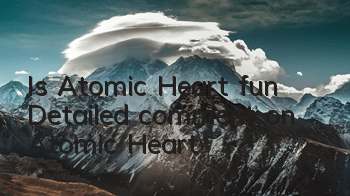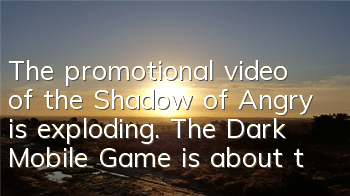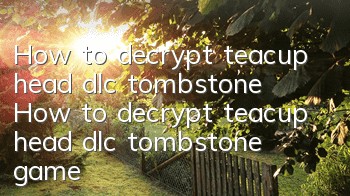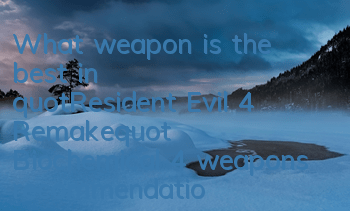If I were asked to use a word to describe Russia in the early 2000s, then the first thing that comes to my mind is "reform". In that turbulent and turbulent era, the oppressed Russian people had the enthusiasm to change everything, and were full of infinite expectations for the new Soviet regime. Inspired by this trend of thought, the new school of painting led by the Russian avant-garde began to emerge. Young painters with dreams hope to present songs to everything in the Soviet Union with this subverted art form.
Thirty-two years ago, with the Kremlin's red flag slowly landing, the great era of the Soviet Union came to an end. After it left, the whole world changed, but the tangible and intangible heritage it left behind was still passed down from generation to generation, and even if time passed, it was difficult to annihilate.
As latecomers, we have put forward countless conjectures and summarized them a lot, but at the end of the discussion, the topic will focus on one point: if it goes on another path, will the tragic ending be rewritten?
Another country?
Faced with this problem that is destined to be unanswered, Mundfish, a developer from Russia, spent five years writing an answer worth savoring. This game, called "Heart of Atoms", was set in the 1950s Soviet Union as the background, and built an overhead world with highly developed biological and robotics technology.
Although the Soviet Union in the game and the Soviet Union in reality are not on the same world line, this does not prevent the strong Soviet aesthetic from crossing this gap. In the game, rows of futuristic buildings, simple and clear constitutive posters, powerful "Motherland is calling" statues, and World War II veterans who mourned their comrades in front of the everlasting fire in the tomb of the unknown martyr, jointly built a stage environment that was different from the tradition.
For me, who has been tired of watching the European and American environment in the game, it is difficult for the Soviet atmosphere in "Heart of Atoms" not to be moved. From buildings to statues to various handicrafts, these man-made objects born in the Soviet Union are not meticulously crafted, but instead present a rough and primitive shock. If the game is only played by walking simulation, the scene alone can make up for a magnificent heroic epic.
Of course, in order to make "Heart of Atoms" look more unique, a large number of robots and transformed creatures, including humans, are undoubtedly an extremely important part of the game. If we look at it in reality, although developer Mundfish's idea of the Soviet Union is bold, it is not groundless. In reality, the Soviet Union did create doll robots and conduct creepy two-headed dog experiments. These studies are full of the boldness and madness of the Soviets, and in theory can also become a door to the utopian world.
In the game, since these technologies have already completed breakthroughs, they have entered the stage of mass production and practicality, so most of the work has been replaced by robots, and those dirty and tiring tasks no longer require humans to do it themselves. The robot is driven by atomic energy and operates efficiently under the settings of the program, contributing to the socialist cause.
For the setting that this robot is engaged in large quantities in production, a large number of science fiction works have raised the hidden worries of "out of control". The story of "Heart of the Atom" also began with an out-of-control incident. Major Sergey, played by the player, was ordered to find out the truth and trace the origin.
It seems that this setting is not very novel today, but it has a different meaning based on the game background. Compared with many similar works, "Heart of the Atom" does not entirely blame the incident of robots losing control on a major villain, but rather a deduction and debate surrounding the concepts and ideals that did exist in the Soviet Union at that time. Therefore, compared to finding the "culprit", the imagination and subversive exploration process is the core content worth savoring.
Although I can't explain the plot direction too clearly here considering the spoiler factor, it is certain that it is obviously inaccurate to summarize it by the word "atomic punk". Because from a deeper perspective, its story not only carries the longing for the vigorous development of Soviet collectivism, but also contains concerns about the excessive development of atomic energy technology, and is a complex existence full of contradictions.
Breaking and bizarre
When players step into this magical world with complex moods, the first things they are attracted to are towering landmark buildings, orderly robots, and red flags flying beside the streets and balloon ribbons. However, just as the players were immersed in the beauty brought by this scenery, the robots suddenly lost control and began to attack humans indiscriminately. In an instant, the streets were filled with fire cars, and the air was filled with the fishy saltiness emitted by blood...
If you want to save all this, the protagonist has to go to a comprehensive research institution and capture the engineers who designed the programs for these robots. And this so-called comprehensive research institution is the first box level of the game.
In fact, the level structure of "Heart of Atoms" is connected by carefully designed box-style levels. Although according to the design ideas in recent years, it is a pity to not create an open world without creating an open world, Mundfish's designers have proved one thing: box-style levels are also charming.
Take this comprehensive research institution as an example, the reason why it has the word "comprehensive" in its name is because it includes four workshops: high temperature, algae, pesticides, and low temperature, and the structure and elements of each workshop are different. In other words, each box level in "Heart of the Atom" will show a variety of different styles in different areas.
Of course, a large box courtyard like thisThere is not only a "comprehensive research institution". Buildings such as the exhibition parks and science and technology museums behind them have unique styles and strong characteristics of the times are all unpredictable killing fields. Players will obviously feel the two feelings of shock and treacherous when they are in it.
The unpredictable scenes bring not only visual impact, but also provide important help to the enemy's performance. When I walked into the pesticide workshop full of plants to collect a jar, the humans parasitized by the "leaf buds" rushed out from the dark place. I was caught off guard and didn't even have time to fill my blood. I picked up an axe and started close-up fight. The leaf bud monsters that could repeatedly parasitize and regenerate made me sweat profusely.
One time, I had just unlocked the door lock of the machine and walked into an exhibition hall of the Science and Technology Museum. When I was about to appreciate the various black technologies displayed in it, a group of robots integrated with the environment suddenly attacked. If I hadn't just picked up the electromagnetic gun and swept it, and used the bunker to avoid various ballistic attacks as much as possible, it would have been difficult for me to escape the fate of being surrounded and killed by being beaten to death.
However, the only drawback is that the types of monsters in "Heart of Atoms" are not particularly rich, which leads to the fact that in some different scenes in the middle and late stages, I found that there are only a few familiar faces when I hit the boss. After a while, the boss who just hit appears with the monster again. The thing that asks you to fight again is also sometimes there. This leads to the shock of the game and the tension at first sight will be greatly reduced as the process progresses.
Nevertheless, the game makers still brought me countless exciting battles through the clever approach of "new and old monsters mixed with each other". From a global perspective, they have cleverly combined the limited species of monsters with the Box Levels as much as possible, a move that gives the game the most basic thrill and freshness.
Of course, in addition to these box office levels, "Heart of the Atom" also arranges a semi-open world with a fair scale. This wide linear design is not only a connection between box levels, but also provides an opportunity for players who want to explore freely and discover various details in the world.
However, from the actual experience, the semi-open design exploration value of "Heart of Atoms" is very limited. When you open the map, you will see that there are only a dozen "testing grounds" worth visiting in the entire area.
The so-called "testing ground" is actually a box-style scene full of mechanism puzzles, which is more similar to the "tomb" in the new trilogy of "Tomb Raider".But compared with the luxurious configuration of "unique themes and unique mechanisms" of "ancient tombs", the test site in "Heart of the Atom" is just to re-patch some mechanisms that have appeared in the main process. At best, it is "control the platform to lift and jump over" and "turn the scene Rubik's Cube manufacturing path", which requires trial and error rather than imagination. The blueprints of some weapons and accessories given after completing it are also of average importance. Even if one is not taken, it will not have much impact on the clearance.
Proficient in everything
In addition to world conception and level construction, the combat system of "Heart of Atoms" is also worth talking about.
Simply put, "Heart of Atoms" first designed a backpack lattice similar to "Escape from Takov" to store weapons, ammunition and consumables, and added an energy slot design - that is, the battle in the game always revolves around energy and ammunition.
According to this system, we can roughly divide the weapons in the game into three categories: ammunition-consuming gun weapons, melee weapons that attack energy accumulation, and kinetic energy weapons that fire energy as ammunition.
In my opinion, the reason why the official has spent a lot of effort on designing two systems of energy and ammunition, guns, melee combat and kinetic energy, is to avoid the cliff-like decline of the game experience caused by the player's "resource exhaustion, only melee combat". After all, the design of melee combat can increase energy ensures that the player's long-range firepower will never be exhausted for a long time. On the other hand, we want players to try different ways of playing in battle to avoid "going to the dark" after finding the optimal solution.
From the actual experience, the official design is effective. Even if a patient with severely phobic who is afraid of insufficient firepower after all the ammunition is exhausted, it is difficult for me to ensure that all the monsters fall down after all the ammunition is exhausted. Several times after they were exhausted from ammunition and food, they had to use a circular saw stick and energy gun to bleed the remaining little cuties one by one.
For this reason, players must consider the resource management layer during the battle. If you are careful enough, you can scan monsters and target them with objects that restrain them. However, practice has proved that attribute restraint is not very useful in the operation, at least for me, who cares about anything, and is like ice, electricity, fire, everything is all brainless, and greets the opponent, attribute restraint has not become a roadblock on my way to clear the road, and it does not prevent me from first meeting him from cleaning up the boss and sweeping the heroes with a gun.
Of course, in addition to these three types of weapons, the glove in the protagonist's hand that shines in the promotional video can also play a role in combat-However, I have used it in a handful of times during the game.
Specifically, although it has powerful functions such as discharge, ice, and foam, its limited scope of action, super long cooling time, and the fact that the attribute restraint in this game is not obvious, all of which have caused me to almost forget its existence in the battle. In fact, to put it simply, there are only eight words: the effect is too small and the cooling is too long.
From my experience on normal difficulty, the battle difficulty of "Heart of Atoms" is quite smooth for veterans, but the enemy's characteristics and atmosphere creation are still passed. Especially in the BOSS battle, the human creatures with huge bodies, flexible and versatile structures can indeed bring a strong sense of oppression when facing them, causing adrenaline to soar.
Overall, the game's combat performance is solid and the arrangement is reasonable and appropriate, but the shortcomings in the types of monsters make it not so amazing. However, according to the official statement, the subsequent DLC will include this part of the content, and I hope this can make up for the current regret.
Overall Comments
In the past ten hours, "Heart of the Atom" has presented me with an imaginative utopian world, with beautiful imaginations about another world line, the fear brought by countless mechanical bodies and experimental organisms, and the engraving and writing of the Soviet national spirit and cultural symbols.
Although the Soviet Union passed away, the flag was still floating in the game, imprinted in the spirit, and attached to the shoulders of the warriors. The light it emits is so dazzling. Where it shines, whether it is violent machinery, biochemical monsters, or fascism, they are scared of it. These vicious things may be able to show off for a moment, but their final destination will undoubtedly be the most despised dust in the long river of history.









